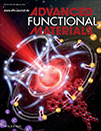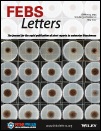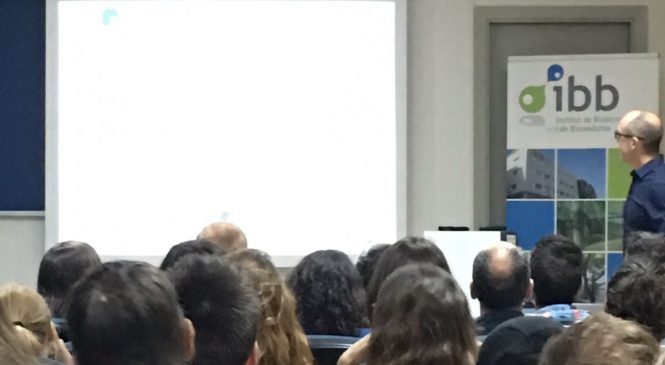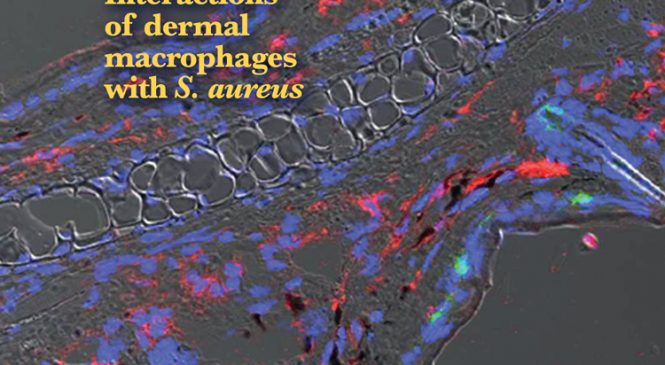News

Peptide-Based Nanostructured Materials with Intrinsic Proapoptotic Activities in CXCR4+ Solid Tumors
Peptide-Based Nanostructured Materials with Intrinsic Proapoptotic Activities in CXCR4+ Solid Tumors
Naroa Serna, María Virtudes Céspedes, Laura Sánchez-García, Ugutz Unzueta, Rita Sala, Alejandro Sánchez-Chardi, Francisco Cortés, Neus Ferrer-Miralles, Ramón Mangues, Esther Vázquez, Antonio Villaverde
http://onlinelibrary.wiley.com/doi/10.1002/adfm.201700919/full
Abstract
Protein materials are gaining interest in nanomedicine because of the unique combination of regulatable function and structure. A main application of protein nanoparticles is as vehicles for cell-targeted drug delivery in the form of nanoconjugates, in which a conventional or innovative drug is associated to a carrier protein. Here, a new nanomedical approach based on self-assembling protein nanoparticl

Perfecting prediction of mutational impact on the aggregation propensity of the ALS-associated hnRNPA2 prion-like protein. Salvador Ventura
Perfecting prediction of mutational impact on the aggregation propensity of the ALS-associated hnRNPA2 prion-like protein
Cristina Batlle, María rosario Fernández, Valentín Iglesias, Salvador Ventura
http://onlinelibrary.wiley.com/doi/10.1002/1873-3468.12698/full
Abstract
An increasing number of human proteins are being found to bear a prion-like domain (PrLD) driving the formation of membraneless compartments through liquid–liquid phase separation. Point mutations in these PrLDs promote the transition to an amyloid-like state. There has been much debate on whether this aberrant aggregation is caused by compositional or sequential changes. A recent extensive mutational study of the ALS-associated prion-like hnRNPA2 protein provides a framework to discriminate t

IBBSEMINARS
"On the sensitivity of modern gel-based proteomics and its application for studies on health and disease”
Dr. Ingrid Miller
Institut für Medizinische Biochemie,
Department für Biomedizinische
Wissenschaften
Veterinärmedizinische Universität,
Wien, Österreich
Dia, 22 de Juny
12:30
Aula de l’IBB

Jornades Portes Obertes 2017
JORNADES DE PORTES OBERTES IBB 2017
Les Jornades de Portes Obertes IBB 2017 s’han dissenyat amb diversos objectius generals:
1.- Divulgar a la societat la feina que fan els investigadors a l’IBB.
2.- Donar-nos a conèixer entre els estudiants de grau catalans per tal que, segons els seus interessos formatius, estiguin assabentats que poden fer els seus treballs experimentals a l’IBB.
3.- Donar-nos a conèixer en el nostre entorn per tal que altres investigadors coneguin la recerca que fan els investigadors de l’IBB i es puguin establir col·laboracions i sinergies entre diferents àmbits (entre diferents disciplines o entre diferents departaments o instituts).
Les Jornades s’estructuren en dos dies consecutius per cobrir franges horàries diverses. L’obertu

Celular Immunology: “Analysis of the HLA-DR peptidome from human dendritic cells reveals high affinity repertoires and nonconventional pathways of peptide generation”
Ciudad, M.T., Sorvillo, N., van Alphen, F.P., Catalán, D., Meijer, A.B., Voorberg, J. and Jaraquemada, D. (2017), Analysis of the HLA-DR peptidome from human dendritic cells reveals high affinity repertoires and nonconventional pathways of peptide generation. Journal of Leukocyte Biology, 101: 15-27.
https://doi.org/10.1189/jlb.6HI0216-069R
Abstract
Dendritic cells (DCs) are the major professional APCs of the immune system; however, their MHC-II–associated peptide repertoires have been hard to analyze, mostly because of their scarce presence in blood and tissues. In vitro matured human monocyte-derived DCs (MoDCs) are widely used as professional APCs in experimental systems. In this work, we have applied mass spectrometry to identify the HLA-DR–associated self-peptide re

Celular Immunology: “Interleukin-13 Pathway Alterations Impair Invariant Natural Killer T-Cell-Mediated Regulation of Effector T Cells in Type 1 Diabetes”
Corresponding author: Carme Roura-Mir, carme.roura@uab.cat.
Diabetes 2016;65(8):2356–2366
https://doi.org/10.2337/db15-1350
Abstract
Many studies have shown that human natural killer T (NKT) cells can promote immunity to pathogens, but their regulatory function is still being investigated. Invariant NKT (iNKT) cells have been shown to be effective in preventing type 1 diabetes in the NOD mouse model. Activation of plasmacytoid dendritic cells, modulation of B-cell responses, and immune deviation were proposed to be responsible for the suppressive effect of iNKT cells. We studied the regulatory capacity of human iNKT cells from control subjects and patients with type 1 diabetes (T1D) at disease clinical onset. We demonstrate that control iNKT cells suppress the proliferatio

